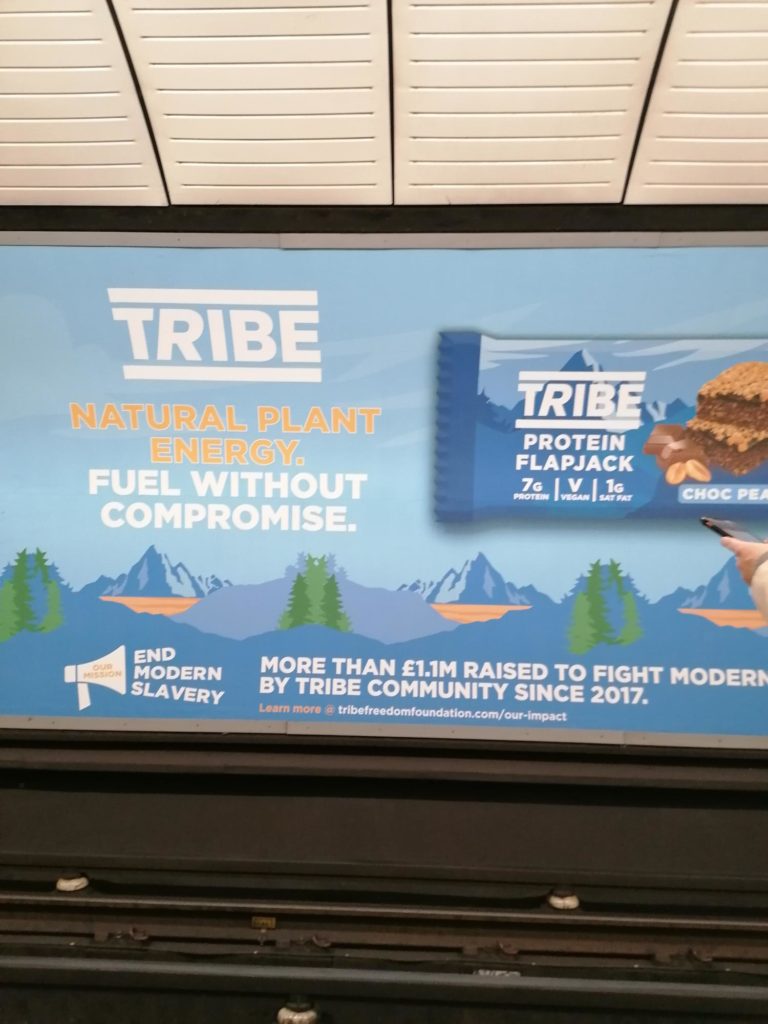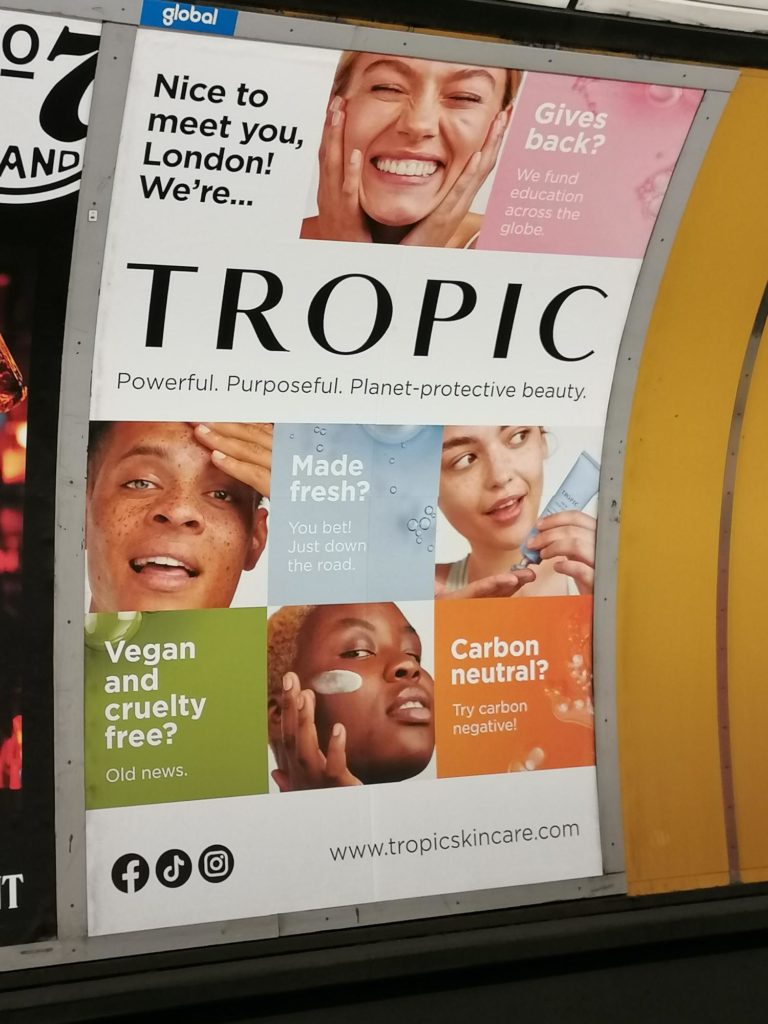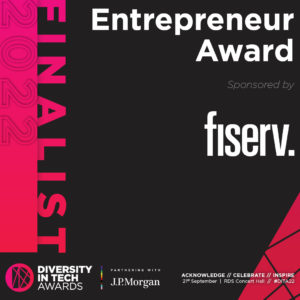On a recent trip to London, I was really taken with the advertising in the tube stations. Brands have definitely decided that it is important to reflect the culture and interests of their customers, and are actively advertising to show how engaged they are.

Tribe
Tribe, for example, is a natural, high-energy, protein bar. That’s a product statement. But, their advertising also uses a bullhorn (very clever!) to draw attention to the fact that their mission is to “end modern slavery” and they enhance this mission with a statement that they have raised over £1.1m to date to do just that. They are reflecting the concerns of their customers, actively showing that they are engaged with those concerns and using financial data to show that this is more than a mere aspiration.

Tropic
Tropic, the skincare people, also advertise their wares – but their style is different. Their ads mention that they fund education – but, perhaps it was just me, the pale colour and the positioning, meant that I missed this message. What really struck me though, was the confidence (bordering on arrogance – but it a nice way) about the clams that they were making, like “Vegan and cruelty free? Old news”…or…”Carbon Neutral? Try carbon negative”. This is a company that clearly signals it lives its values and is constantly pushing to achieve more.

Pretty Little Thing
The third company that caught my eye was Pretty Little Thing. This company was regularly in the news for selling cheaply produced, highly disposable clothing. Instead of changing their business model – which I have no doubt is highly successful – they have introduced Pretty Little Thing Market Place where their clothing can re re-sold. It’s a clever take on the current focus on pre-loved clothing, the circular economy and the desire of their customers to help the environment.
Brands have realised that if they do not reflect the concerns and interests of their consumers, those customers will go elsewhere. How do you know that? – Just look at the advertising!











